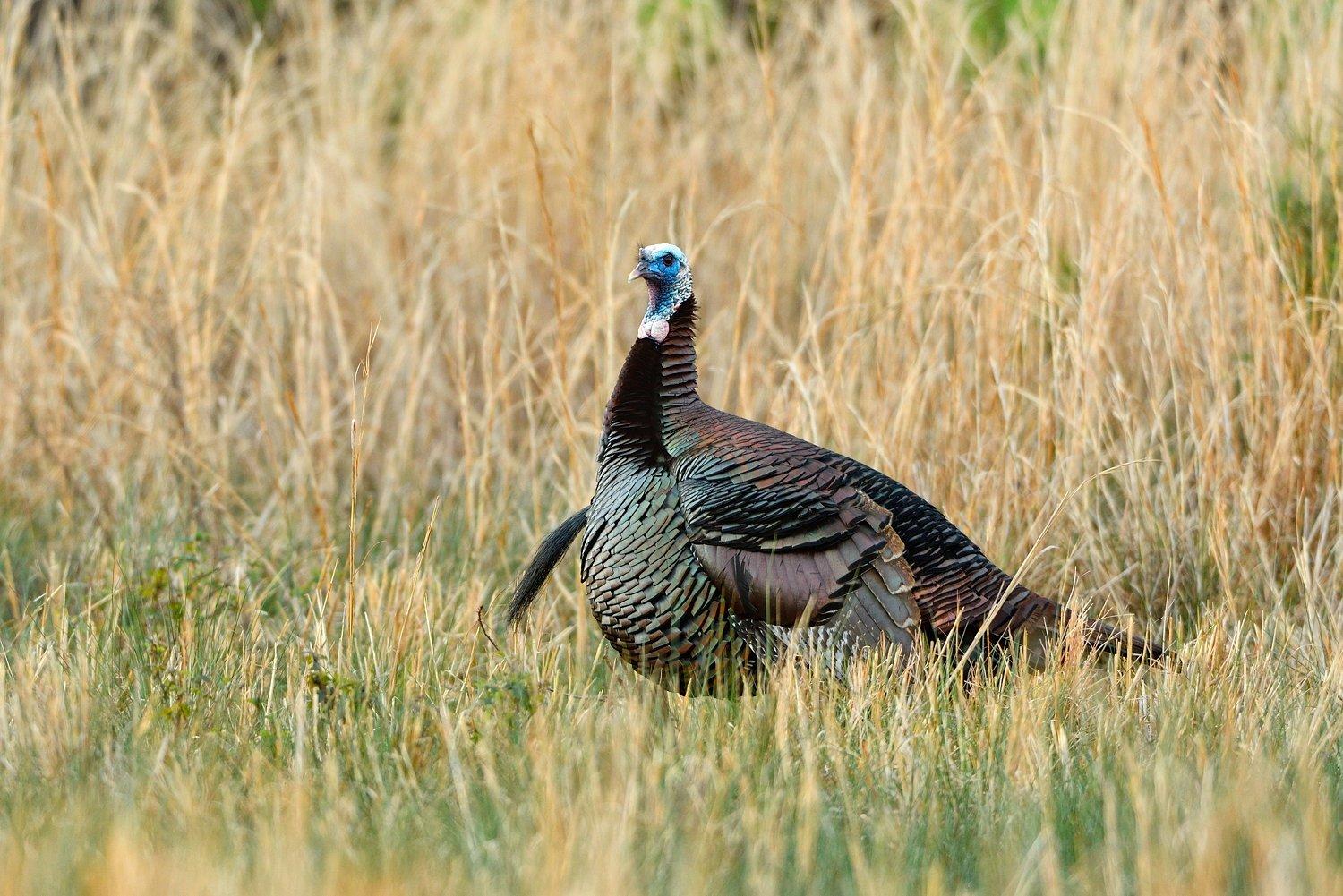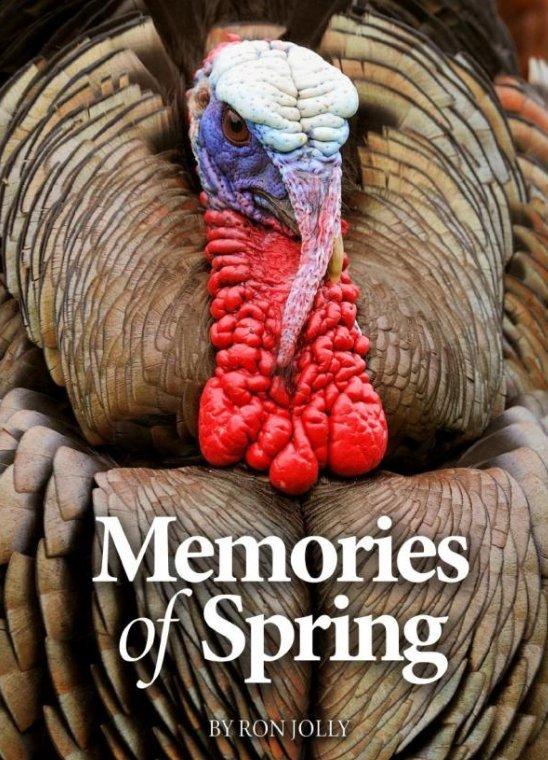How an unorthodox plan came together for a tough Alabama gobbler
Alabama turkeys are paranoid, unpredictable and unforgiving. They're not like the Easterns that live in, say, Missouri or Ohio or New York. The birds that lived on my friend Ken Buce's farm in Alabama were no exception. If one gobbled, he usually got a response from a hunter. And if he made a mistake, he got a ride in a pickup truck.
Ken invited me to hunt, but I only had a few days to work with. I arrived feeling already pressed for time. Ken drove me to a little-used road that afternoon and instructed me to walk down it until I came to a large limb that had fallen across the road. I was to stop there and try to roost a turkey on the narrow ridge beyond. There had been a turkey gobbling on this part of the ridge for three mornings in a row, he said, and it was a good place to get started. I gathered my gear and watched my friend drive away.
It was a typical late-April day for the region. There was no wind and the temperature had risen to the mid-80s. The narrow two-track wound through a grove of 15-year-old pines. Every footstep kicked up a small cloud of lime-green pine pollen. After several hundred yards, the road began to slope, and at the bottom of the hill the pine plantation abruptly switched to mature hardwoods. Once I entered the timber, the sunlight faded a little and the temperature dropped.
I could see the large limb across the road 100 yards ahead. As I eased toward it, I noticed the dark water of a shallow slough to the right of the road. By the time I reached the fallen branch, there was water on both sides of the road. I decided to advance until I could see beyond a bend in the road, then look for a place to set up. From here the ridge was no more than 100 yards wide for a quarter mile, then it widened into hardwoods beside a large pasture.
I located a large oak near the ditch water and settled in. I called several times, hoping for an answering gobble, but never got a response. Finally, at the magic hour, I heard heavy wings lift into the canopy of oaks and tupelo gums. I had just put a gobbler to bed.
A Swamp Legend
That night, Ken told me more about this old longbeard. The turkey lived in the swamp where I had roosted him. He had also been chased by Ken and each of his guests for the entire season. He was hard to predict, and the ridge where he lived made it difficult to set up on him.
The next morning found me beneath the same oak, just beyond the limb in the road. At daylight his presence was confirmed by more than 30 gobbles from his perch in a tree. At fly-down, I resisted the urge to call and simply let the gobbler pitch down to the ridge. As soon as he did, I began calling. I was so encouraged by his response that I shouldered my old Remington and settled on the stock.
One hour later I still sat there, wondering where my turkey had gone and why he had shut up. After another hour of waiting, I gave up and headed back to my truck.
That afternoon, I returned to the spot where I thought the gobbler had flown up the night before. I never called. Instead I sat with my eyes trained down the road. Just before sundown a large gobbler stepped into the road at 100 yards. I was determined not to call, but caved as soon as the he stepped into the timber. At the sound of my yelps, he walked back into the road - still out of range - and strutted in circles until he flew up to roost.
Roosted
The next morning, I took a tip from Ken and approached his roost from the pasture, in the opposite direction. At daylight he gobbled and I set up with a clear view of the road. When he flew down, he answered my calls, strutted in the road and walked around the curve toward the fallen limb and disappeared. As my mind raced for a way to cut him off, I remembered why I never buy lottery tickets.
That afternoon, I entered the hardwood bottom and set up, hoping the gobbler would come back the way he left. I didn't hear or see him until roost time. I had spent the entire afternoon committed to the direction the gobbler had gone in the morning. When he flew up behind me, I was totally confused and had no idea what to do next.
Back at camp, I discussed the situation with Ken. I felt like a rookie, playing a game of Whack-A-Mole for the first time. If I went left, the bird went right. Ken reminded me this turkey had been hunted by several of his guests and the results were always the same. He suggested I hunt a different area but I declined. I was all in on this bird.
The third day of my hunt, I settled against a big gum tree less that 100 yards from the roosted gobbler. When he landed in the road, he taunted me with incessant gobbles and strutted in plain sight. When he made his move, it was away from me and toward the pasture.
That afternoon I sat down by the big oak I had chosen on my first hunt. I was once again hoping my gobbler would come back to the ridge from the way he'd left. Three hours later I was about to give up when he stepped into the road 70 yards away. When he flew up to roost, he landed in a tupelo gum less that 60 yards from me. If I had had a lottery ticket in my pocket, I would have torn it up then and there.
I sat until black dark before sneaking into the road and backing away from the gobbler. In my effort to step lightly, I totally forgot the large limb in the road. Before I knew it, I was tripping and stumbling and falling over the big limb across the road with a clatter.
I'd made a rookie mistake of forgetting about the limb across the road, and I was concerned about all the noise I'd made by snapping branches and spilling half the contents of my vest onto the road. I knew the gobbler had heard the commotion.
After gathering my wits, I got to my knees and fumbled around, trying to locate my gun and valuable items spilled from my vest. In the dark, only one item was visible in the gloom: a roll of emergency TP that I always carry in a plastic bag. That's when an idea struck me.
That turkey knows something is wrong. He had to hear the noise. Then: He always goes away from calling. I took the roll of tissue out of the Ziploc and did a roll job on that limb that any high schooler would've been proud of. It literally glowed in the dark.
Last Chance
The last morning of my hunt, I approached the gobbler's roost from the direction of the pasture. Now the turkey was between me and the TP-draped limb. He gobbled several times on the roost. I set up 100 yards from him, and let him fly onto the ridge before calling. When I called, he walked into the road, looked in my direction, checked his wings and walked toward the toilet papered branch. Thirty seconds after he disappeared from sight, he came running back toward me, clearly spooked by the bright white paper in his path. I shot him at 30 yards.
Some turkey hunting purists may call that cheating. In my defense, I did call to the gobbler just before pulling the trigger - a single cluck to stop him. Remember, this was an Alabama turkey. These birds are paranoid, unpredictable and unforgiving, and for good reason. When they make a mistake, they take a ride in a pickup.
Like this? Here's another: The Devil Turkey of Martin Creek
Editor's note: Ron Jolly was recently inducted into the NWTF Grand National Hall of Fame. A Realtree.com contributor over the past several years, he's also got a new turkey book, Memories of Spring. For inscribed copies, send a check or money order for $30 to: Jolly's Outdoor Visions, 204 Fast Lane, Tuskegee, AL 36083. Include how you want the book inscribed and he'll be happy to get a signed copy headed your way. It's also available on Amazon.
More Realtree turkey hunting.










